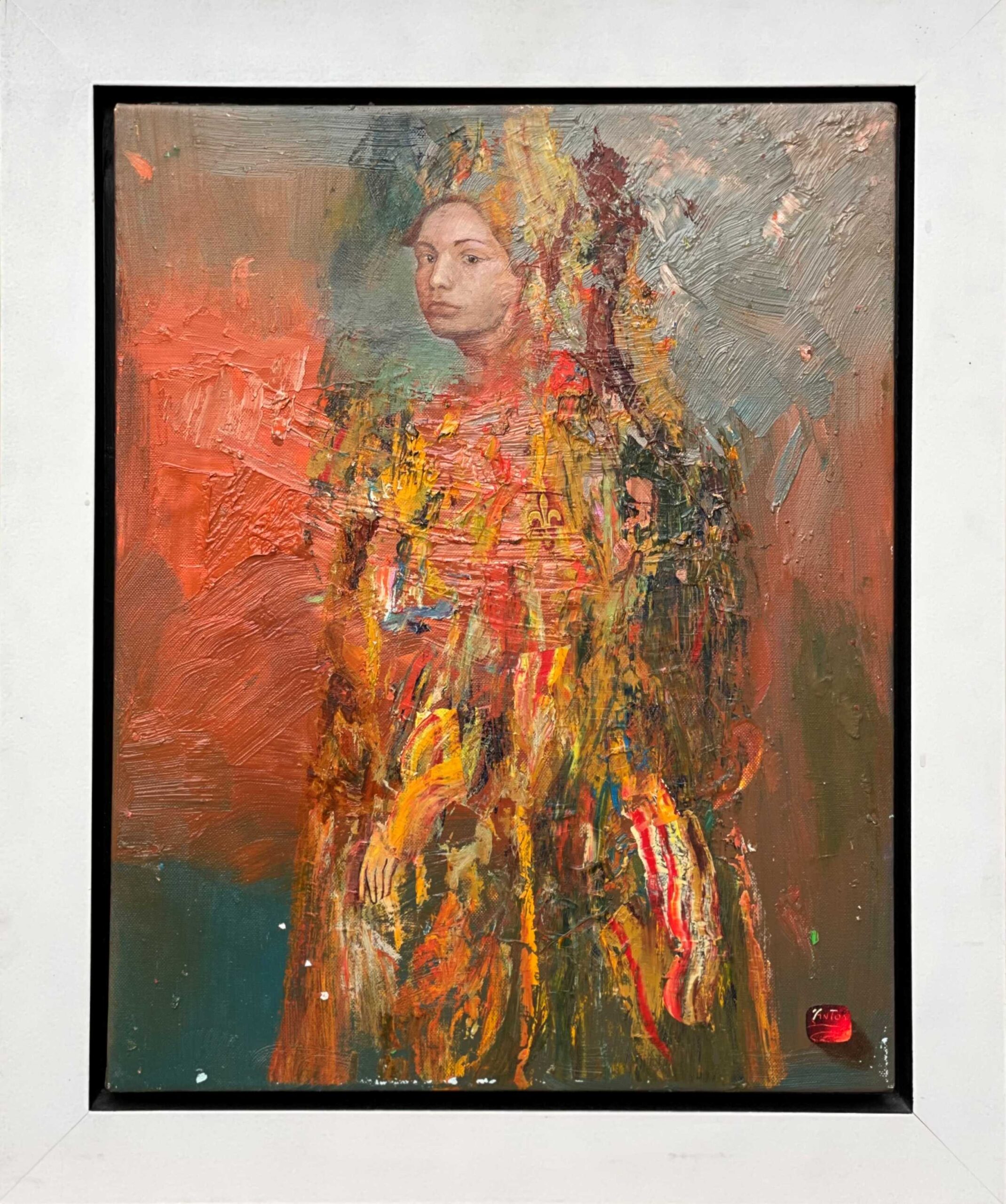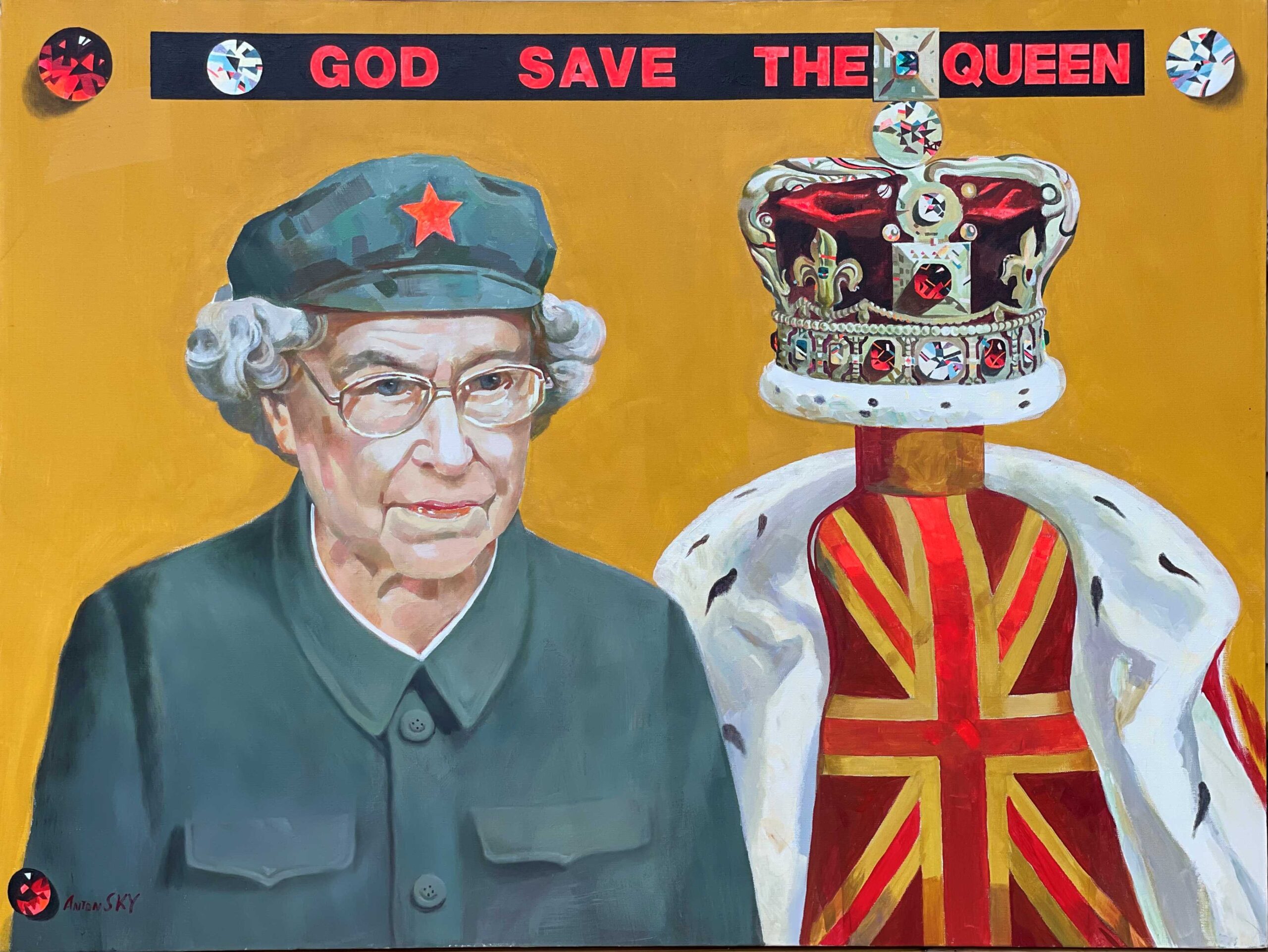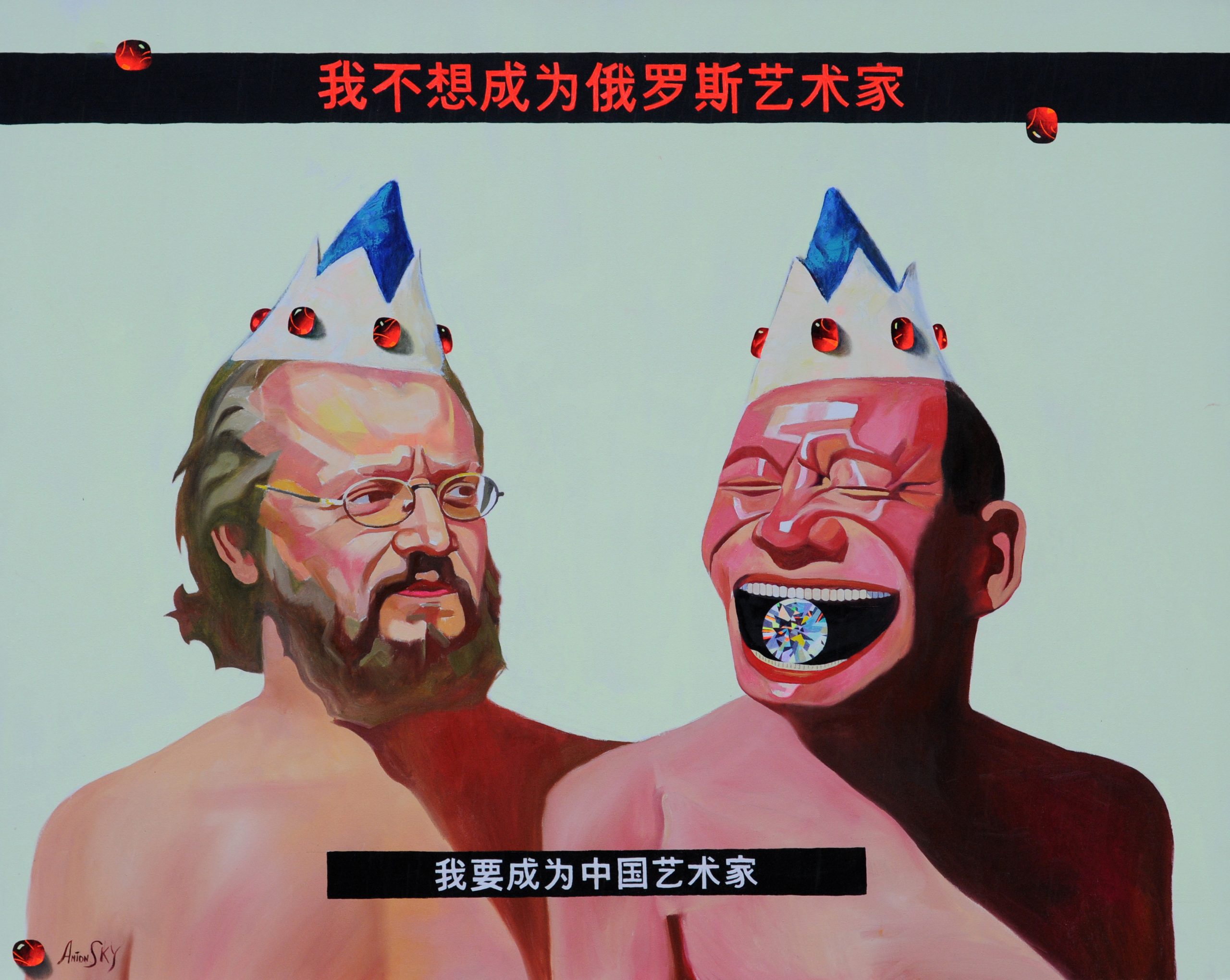Anton S. Kandinsky
Anton Skorubsky Kandinsky (1960-2014) Anton S. Kandinsky (born 1960 in Soviet Union, today’s Ukraine) was a New York based artist known for his paintings depicting realistic images of luminescent gemstones. Referred to as “Gemism,”” these works comprise a movement started by Kandinsky in New York in 2004. The gemstones are intermingled with flags, ideograms, political figures and celebrities along with symbolism from China, the former Soviet Union and American pop culture. Yet this is not straight Pop, nor is it Chinese art or some pastiche of Soviet-era propaganda; “Gemism” is a tip of the cap to all three. Anton S. Kandinsky was born into a family of artists. His father was a socialist realism painter and his mother was a sculptor. Kandinsky studied at Simferopol Art College (1975-1979) and was a private student of Yevsey Moiseyenko in St. Petersburg before entering the Kyiv Art Academy, where he studied at the Monumental Department (1980-1986). In 1986 Kandinsky graduated from the Kyiv Art Academy with a Master’s in Fine Arts. In 1998 the artist immigrated to the United States of America. His work has been exhibited in diverse locations around the world including Meditation of Weapons curated by Marc Ecko in New York (2007) and at the Ukrainian Institute of Modern Art in Chicago curated by Roman Petruniak (2008), Russian Contemporary Show in Beijing at Han Ji Yun Gallery (2008), China-ism II: Democracy or Economy? Anton S. Kandinsky / Ai Weiwei, WHITE BOX, New York (2011), I want to be Kandinsky, Loft at Malaya Bronnaya, Moscow (2012). The artist lived and worked in New York and maintained a studio in Chelsea for over 10 years. Media Oil on canvas paintings, installations, photographs, video and performance Important Projects The Meditation of Weapons (2007) I don’t want to be a Russian Artist… (2008) China-ism (2009) Collaborative Projects Guns N’ Roses, deluxe edition of “Chinese Democracy” album, 2008 French Ministry of Foreign Affairs, European Union Diplomacy and Economics Conference, 2010 Where to see his works Unit24 Gallery, London (2012) Inkwell Galleries, New York (2012) Steven Kasher Gallery, New York (2012) Collectors Sanford Weill, Victor Pinchuk, Governor Rick Perry, Queen of England, Whit Armstrong, Natasha and Michael Bleyzer, Seth Gerszberg, Marc Ecko Deal American Flag, 2007 sold for $50,000 at Taipei Art Fair, August 29, 2008 I Don`t Want to be a Russian Artist, I want to be a Chinese Artist, 2009 sold for 8,750GBP at Phillips de Pury & Company, September 26, 2009 “Kandinsky’s glowing, intensely personal paintings are now the essence of modernism, but they are infused with the lessons and technical brilliance of the historical past as well as his passion for probing such enigmas as the links between the wider world and inner experience, the “macro” and the “micro” of existence. Luscious, elegant, luminous with jewels and a dazzling collection of political references, Kandinsky’s paintings are glorious, image-studded with rubies and diamonds, both arresting and provocative, delightful and at the same time decidedly quite disturbing, a fresh and empowered art form that directly reflects both Kandinsky’s own personal life drama, and his truly impressive and original, expressionist skills, within a wide variety of paint manipulation modes”. – Modernist art historian and Princeton University professor – Sam Hunter
Interview with Anton S. Kandinsky conducted by Alex Demko on 4/28/2010.
I am a product of the socialist realist school of painting. When I came to the United States, I realized how weak we, Russians, were in the face of the world’s art processes. I understood that artists in the United States are an integral part of international art movements while we, Russians, are not. When I got here, I looked at installations and performance art as if it was something barbarian. Today, I understand that it is very sophisticated, an integral part of contemporary art.
When I studied works by Warhol, I was really impressed with his image of Mao. I was unconsciously drawn to the Mao painting after seeing it at the Metropolitan Museum of Art. Is it a sarcastic caricature? Is it making fun of this political figure? I see that Warhol had a certain attitude towards Mao. Much later, after I saw works by contemporary Chinese artists (Yu Minjun, Zhang Hongtu, Li Shan and others) I realized that if Warhol was alive today, he would have switched his attention from Basquiat to contemporary Chinese artists.
Contemporary Russian art is very simple. It copies Western contemporary art, sometimes producing very weak results. At the same time, contemporary Chinese art has made it in the West as a completely independent and authentic event. I don’t understand how Mao can simultaneously be in a mausoleum and on the paintings and still be received normally by the public. Contemporary Chinese art has very strong visual hieroglyph-sym[1]bols. In the West, the strongest visual symbols are the Mona Lisa, the Statue of Liberty, the Sphinx, and Michelangelo’s statue of David. Meanwhile in China, we see Yu Minjun’s smile. We think that China is primitive and communist but in reality they laugh at us. Yu Minjun’s smile is a very strong symbol!
Ai Weiwei’s attitude toward the West and China is another strong symbol. The artist gives the finger to both the White House in Washington D.C. and the Presidential Palace on Tiananmen Square. Ai Weiwei is strong and independent. A Russian artist would never give the finger to both the White House and the Kremlin. A Russian artist would take the
side of either one party or another. This is why China is now the leader.
I won’t even mention contemporary Western artists, such as Koons or Hirst. They are too dependent on commerce. In our current economical crisis, their works have lost their actuality. On the contrary, art depends on social feelings. When social dependence and feelings disappear, art does not exist.
Do not think that China-ism is something unique or applicable only to China. China-ism is important for all of us, non-Chinese people especially, because contemporary Chinese art can contribute to the development of art internationally. This is a historical moment! China-ism is a movement for non-Asian artists that will allow them to contribute to the advancement of world culture and art.
China is a very dynamically developing world economy. Hence its society, culture and art are developing very strongly as well. Problems attributed to the West (for example terrorism) are not applicable to China.
How did impressionism start?
How did a modern New York come into existence?
Where does the Renaissance come from?
Where does Kandinsky’s abstract art come from?
How did Picasso start making art?
There are some reasons that we cannot answer and explain these questions; yet we clearly understand that they exist.
With my China-ism concept, I confirm the phenomenon of the contemporary Chinese art.






